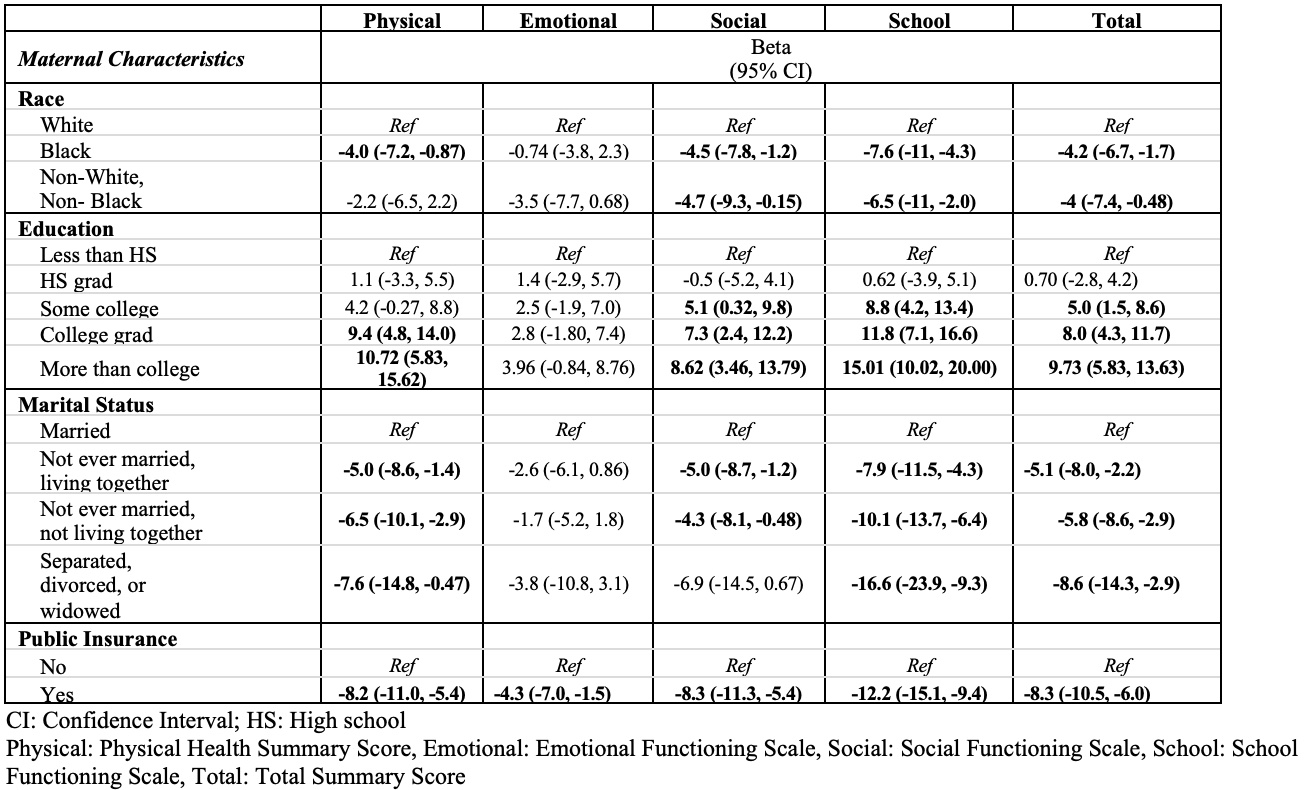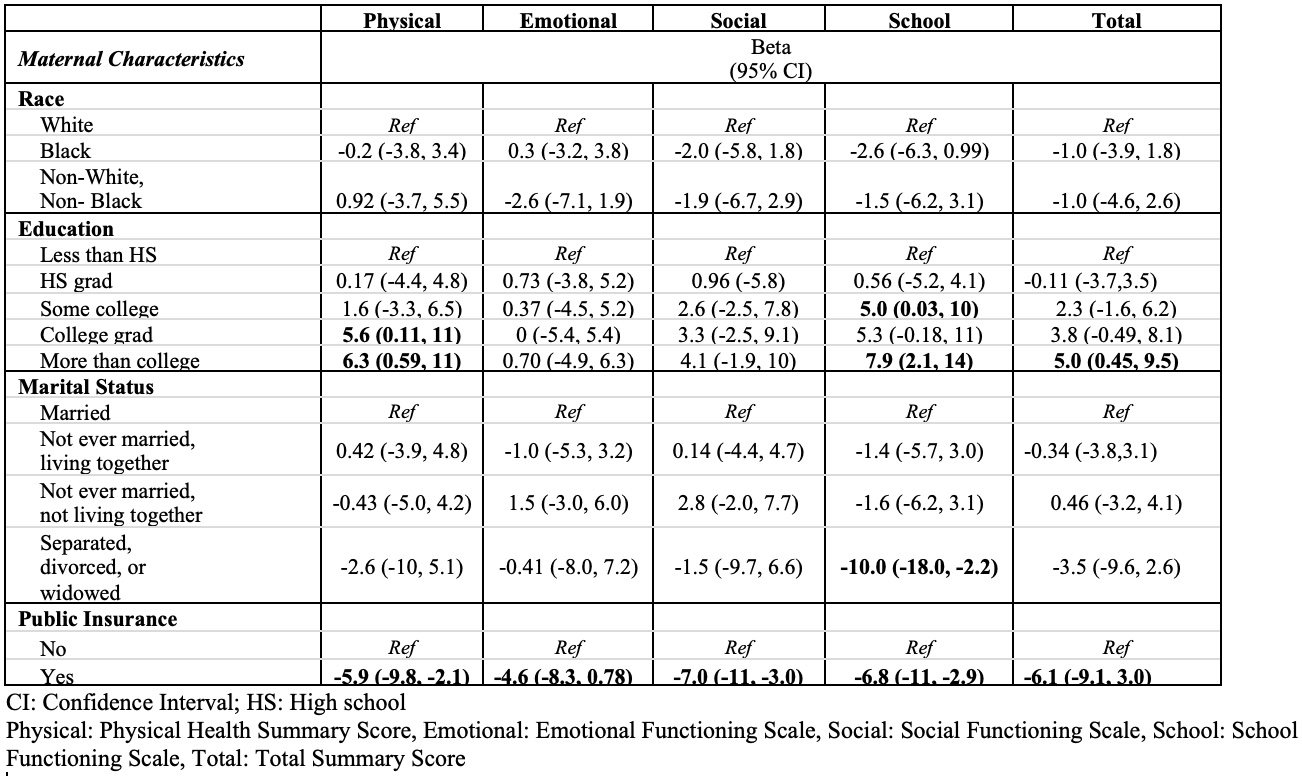Neonatology
Session: Neonatal Follow-up 1
492 - Social Determinants of Health Rather Than Race Impact Health-Related Quality of Life in 10 Year Old Children Born Extremely Preterm
Saturday, May 4, 2024
3:30 PM - 6:00 PM ET
Poster Number: 492
Publication Number: 492.1464
Publication Number: 492.1464
- CC
Catherine M. Call (she/her/hers)
Medical Student
Tufts University School of Medicine - - Boston, MA
Scarborough, Maine, United States
Presenting Author(s)
Background: Healthcare disparities among children are extremely important because of their potential impact on long-term health-related quality of life (HRQL). Addressing healthcare disparities necessitates investigating and addressing Structural Racism and the Social Determinants of Health (SDoH). Recent work from the Healthy Passages study shows parental socioeconomic status (SES) is positively associated with child HRQL across all racial categories. This association has not been studied in infants born Extremely Preterm (EP), a population at increased risk for physical, cognitive, and psychosocial impairments. Achieving health equity for infants born EP across their life course requires identifying the impact of racism and SES on HRQL.
Objective: To evaluate the association between self-reported maternal race, socioeconomic status (SES) factors, and HRQL among 10-year-old children born EP.
Design/Methods: Participants were identified from an ongoing multicenter prospective longitudinal study of Extremely Low Gestational Age Newborns (ELGAN Study), born between 2002-2004, and evaluated at 10 years of age using the Pediatric Quality of Life (QoL) Inventory completed by their parent or guardian, assessing physical, emotional, social, school, and total (composite) QoL domains. Descriptive statistics were used to evaluate the relationship between QoL scores and self-identified maternal race. SES factors (education level, marital status, and public insurance) were added to the multivariable model.
Results: Of 1222 infants who survived until discharge, 863 (70.6%) were evaluated at 10 years. Differences in mean 10-year QoL scores across racial groups were observed (Table 1) and were significant on univariate analysis (Table 2). However, these associations were lost when adjusted for mother’s marital status, public insurance status, and education status (Table 3). Comparing children with English as primary language spoken at home versus any other language revealed a significant difference only in school QoL, in which non-English language was associated with less favorable scores.
Conclusion(s): Among 10-year-old children born EP, differences in parent-reported QoL were associated with maternal SES factors rather than race. Our results suggest that interventions supporting mothers’ SES may enhance QoL of children born EP. Furthermore, these results underscore that race is a social construct, rather than a biological variable, as we work towards greater equity in care provision.



